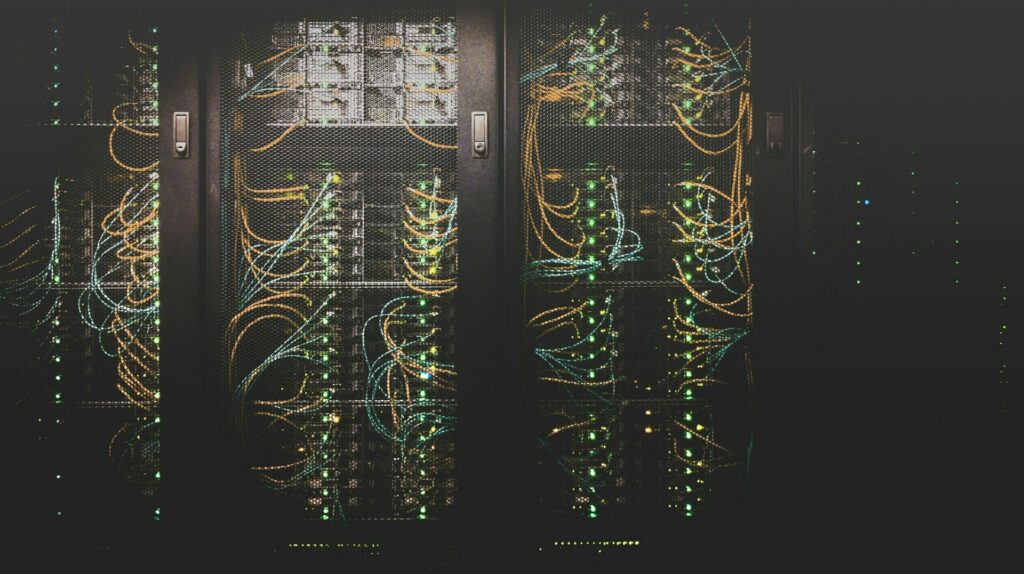By Clare Green, Media and Communications Officer at the Francis Crick Institute and Stempra committee member
The environmental costs of building and running AI models are coming into sharper focus. Yet it’s unclear whether AI’s impact on the environment outweighs the benefits it brings, an issue made worse by limited transparency from the companies behind these tech tools.
Training and operating AI systems demands huge amounts of electricity, with data centres powering AI already using about 1 to 1.5% of global electricity in 2023. This demand is rising quickly, and data centres are set to account for over a third of the extra electricity needed in major economies by 2026.
Major tech companies are already reporting these effects. Microsoft’s emissions have risen by nearly 30% since 2020, Google’s by 48% over five years, and Meta’s have doubled since 2019. OpenAI’s large models also require significant energy, with research highlighting their high carbon footprint, even though the company does not publish full emissions data.
The environmental toll does not stop at energy. Data centres also require significant water for cooling, which can worsen shortages in already stressed regions. As AI continues to expand, so will its pressure on both energy and water resources.
That’s the bad side. Some reports have highlighted that the benefit of using AI to automate tasks and the increased efficiency possibly might lower the strain on the environment as it embeds into society. Others highlight that, as the technology matures, it is likely to become faster, cheaper and less data-hungry.

A balancing act
AI use is becoming more mainstream, from helping us write snappy article titles to producing transcripts of audio interviews. This has led to more debate about the impact on a personal level, and whether or not people should monitor their use of AI.
The environmental impact of a person using a product or service is minimal compared to that of large organisations or countries. Take the example of eating a Big Mac, which is nothing compared to the influence of the entire meat industry. That said, the combined impact of many individuals does matter, suggesting there’s value in using AI more mindfully.
A recent study found that multi-purpose generative AI models – systems able to create original content like text or images in response to prompts – are orders of magnitude more environmentally costly than task-specific systems. The authors concluded that generative AI use should be intentional, with its environmental cost factored in.
For us in comms, this raises practical questions. Does it make sense to use AI for specific tasks, like media monitoring or writing meeting minutes, which currently take time away from writing press releases and blogs, tasks that arguably benefit more from human oversight?
Overcoming barriers
One of the trickier tasks facing climate science communicators is presenting the environmental implications of AI in an easy-to-follow way. With the tech sector often embroiled in jargon, it’s hard to understand how environmental costs are calculated, whether they apply at an individual or societal level and whether new technology will quickly make current assessments out-of-date.
Even Google’s AI itself said to ‘acknowledge both the potential benefits and drawbacks’ when discussing AI’s impact on the climate. Friends of the Earth argue that there’s a hugely polarising debate around AI, which depicts it as either a corporate tool worsening inequalities and leading to a dystopian nightmare, or a force of good overall, which will solve our environmental problems in the long run. This all-or-nothing approach is a problem for having nuanced, balanced discussions.
They also suggest that we need to define types of AI before we can even begin to debate them or create new policies. As communications professionals, it’s essential to explain terms clearly, avoid jargon and use comparisons to industries already understood to have an environmental impact, like the travel, textile or meat industries. Beyond increasing public understanding, this can also help us to discuss between ourselves when we feel it’s appropriate to use certain models or not.
AI is clearly here to stay. With the exponential pace of development, there may come a time when widespread AI use is justifiable for any task. But in the meantime, being aware of how we use flashy new tech more sustainably can only help.
